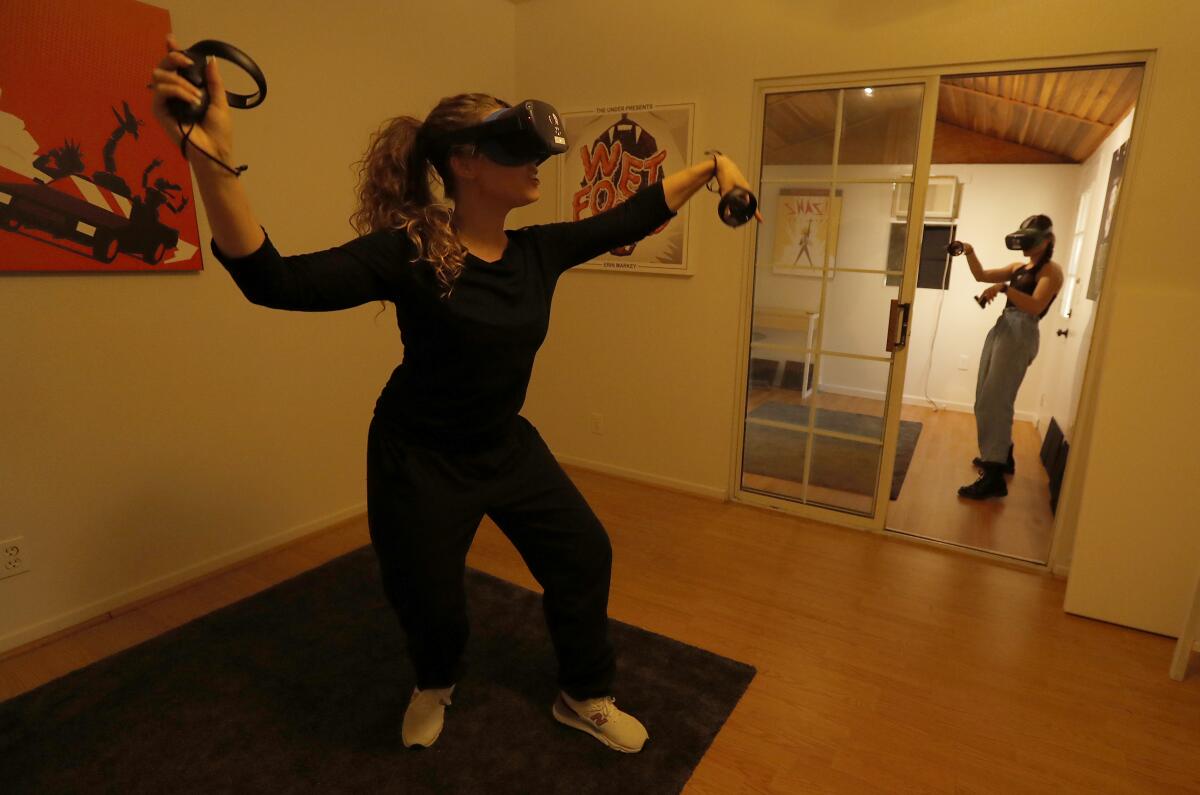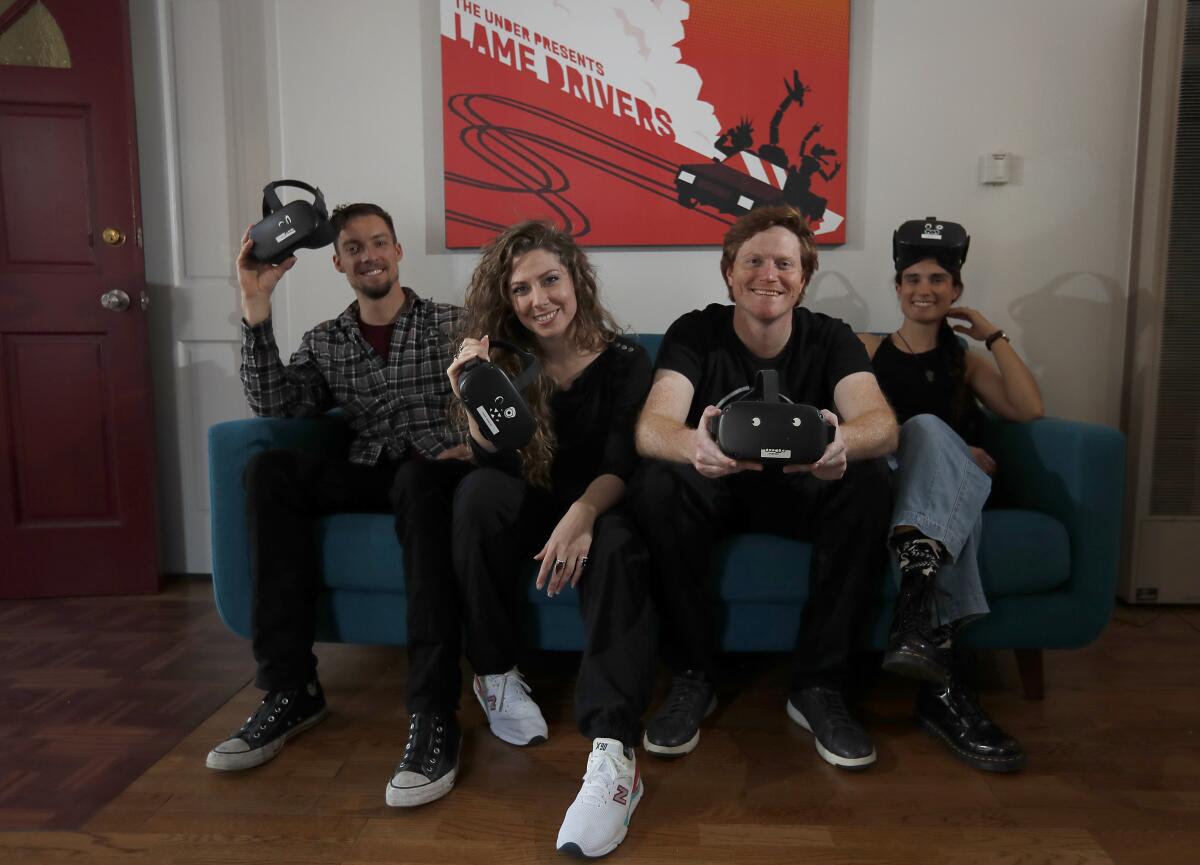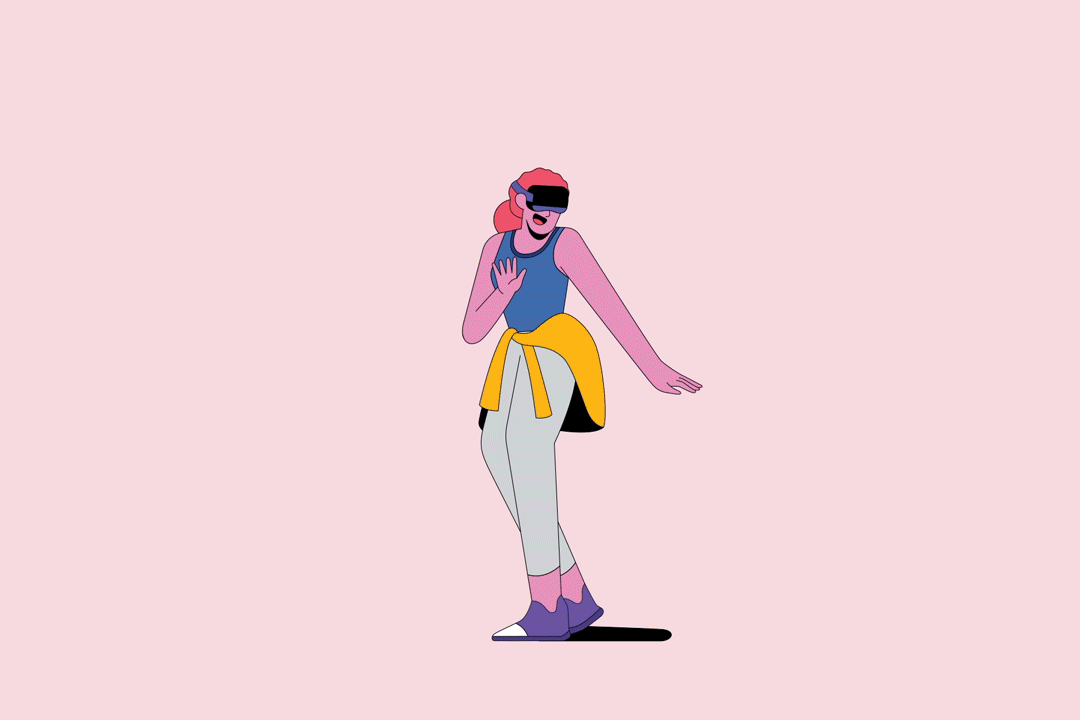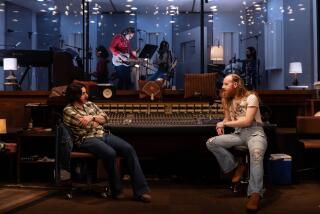Actors sheltering at home perform in live VR experiences, making case for new theater form

Last week, on the verge of being late for a work-related call, I stumbled upon a group of strangers. One of them snapped their fingers near my face. Another tossed me a sword.
But I didn’t run. In the virtual reality world of “The Under Presents,” these actions are tantamount to instant friendship. I admired the sword but set it aside when I spotted an inner tube, knowing that there would be no fighting here. Besides, the pool equipment would be better for an impromptu dance party, which can happen regularly in “The Under Presents.” The work call would have to wait.
A woman who looked to be nearly 15 feet tall commandeered our attention. She said we should all say hello to her new friend named “Rice Krispie Treat” and then she asked if we could do a group hug. If there was any doubt that this was not your standard video game character and was instead a creation being puppeteered by a very-real actor, it was about to become apparent.
“We can’t hug out there right now,” she said, alluding to our current health crisis, “so we may as well do it in here.”
Starved for company, let alone the community offered by a friendly embrace, I stretched out my arms and leaned forward, my left hand hitting the coffeemaker in my kitchen as I did so.
Better VR headsets and experiences that respond to you are reasons to isolate inside virtual reality when COVID-19 is the reality outside your door.
This was my first hug in months, and even though there was no one actually there — there being my kitchen — it felt pretty dang good. Everyone snapped in celebration. Moments later I removed the virtual reality headset, but not simply because work beckoned. No, this odd yet innocent moment in an absurdist work of tech-focused improvisational theater had not just put a smile on my face, it brought me to tears.
“The Under Presents” is never not weird. Sometimes it’s ridiculous. And often there’s just a hint of something sinister happening. Since shelter-in-place orders to stem the spread of the coronavirus went into place in mid-March, I’ve spent about 20 hours inside the work from local studio Tender Claws. I often don’t know exactly what’s happening and sometimes struggle to describe the experience to friends. Once I danced with a singing cat. Another time a tiny drunk skeleton tried to teach me spells. Often I am entering a ship in a bottle.
But I believe “The Under Presents” is lovely, a sprawling universe that conjures the intimacy of the best of immersive theater (“Sleep No More”) and puts the emphasis on the wonder of play. When it was released for the Oculus Quest last November, “The Under Presents” felt like an ambitious and borderline demented — in the best way possible, of course — experiment. It melded a three-act, time-twisting single-player narrative with a multiplayer hub filled with live actors and lots of silly player improvisation and abstract puzzles.
Today, however, in a world struggling to balance life, finances and the arts with measures to slow the spread of a vicious virus, “The Under Presents” feels more like a statement piece. It shows one potential way forward, a future where the worlds of home technology and theater coalesce to build not just fresh experiences but carve out new business models.

Tender Claws is seizing the moment.
Its stable of 18 live actors, originally scheduled to end in March, has been extended full time through the end of May, and part time at least through July. Also in May, every Friday and Saturday evening “The Under Presents” will host hour-long variety shows, where about 10 actors each night will rotate among players for brief, highly interactive experiences. Those in the game now may encounter virtual rehearsals throughout the day, but expect something that’s communal, gamified and surrealist, all of it furthering the game’s modern virtual-reality vaudeville. This is, after all, a game where felines sing of the unexpected joy of receiving wet food.
Ultimately, “The Under Presents” works because it re-imagines theater for the game space. While not a replacement for live, it is another avenue for performance, and it’s medium-specific work that was built specifically for the home, offering one answer to a question that is no doubt vexing many right now: What options are there for live performance when we can’t gather in the same space?
Artists are pushing VR boundaries beyond gaming. Enter Art Reality Studio, a virtual reality playground for artists, like a next-gen Gemini G.E.L.
“I’m very excited about people experimenting in these forms, but I worry about just putting a theater presentation on video without thinking about making it stronger through the medium that it’s presented in,” says Samantha Gorman, who co-founded Silver Lake’s Tender Claws with Danny Cannizzaro and has also taught digital writing and performance for the Rhode Island School of Design. “I don’t want that to turn people away. I’m interested in people thinking more critically about what this medium brings to performance.”
In our sudden stay-at-home lifestyle, using technology to transport live performances to the home is a topic that’s top of mind. Some escape-room outfits have been experimenting with video conferencing apps such as Zoom to run their puzzles, while companies that specialize in remote experiences, such as the mobile performances of Candle House Collective, are selling out of shows as they’re made available.
Montreal’s performing arts space the Phi Centre hosted a panel in virtual reality this week devoted in part to stay-at-home performances, where Tobey Coffey of the National Theater of London noted that the medium may not experience mass adoption now — most headsets, he noted ironically, are currently sold out — but the days of thinking about audiences as local only may come to an end out of necessity.
“We’re very, very, very much talking about audiences being at home in a way we weren’t quite as much earlier,” said Coffey, who speculated that nine months from now we should expect to see some creative projects come to fruition.
Bringing weekly variety shows to “The Under Presents” was born out of this moment, in part to give actors more hours when other jobs are on hold or canceled, and in part to see what the game is even capable of as a platform.
“It’ll be the first time we’ve advertised a specific time we try to get a lot of people to come in, and a lot of actors at the same time,” says Cannizzaro. “We’ll have actors in the same room bouncing off of each other. Longer-term, it has us thinking of other ways to use these tools, and other stories we can tell. We’re at the early stages of figuring out other shows that can appear in ‘The Under’ and make use of the tech we built.”
Games are a playground, a place to see what happens when we do what we aren’t told, and a world in which failure is embraced — welcomed, even — as a way to learn. Why play matters in times of stress.
The actors in “The Under Presents” typically work out of various rooms in an Atwater Village house, but days before stay-at-home orders were enacted Gorman and Cannizzaro made sure each performer was set up with the ability to work in VR from home. Built in collaboration with New York-based theater troupe Piehole, “The Under Presents” was always designed to be versatile.
At its core is a relatively lengthy single-player narrative about an ill-fated research vessel and the outcome of its crew (and a dolphin). While a player will gradually discover they can manipulate time and, in turn, the events that befell this ship, this largely unfolds as a performance piece, one where we piece together the story by following different characters throughout the ship.
Beyond the narrative, however, lies a more flexible, expansive world, one with a stage that can host timed, previously created performances (they loop). It was designed with the possibility of essentially housing various theater companies. Here is where we will encounter other players as well as live actors at random. Actors in “The Under Presents” are unrecognizable from their real selves, each having multiple roles.
All of us are sort of levitating creatures that look like masked spinning toy tops that double as bases for spell-casting — a series of complicated finger snaps and circular motions — when removed. While the actors can read user names, how many hours someone has played and whether or not they have previously encountered someone in the production, we are all voiceless and anonymous, limited only to finger snaps and small head movements.
“There’s no gender, they don’t know we know their names and they don’t know we can differentiate them, but I think there’s a lot of power and agency in having everybody equal,” says Haylee Nichele, who plays a quiet dancer in “The Under Presents.”
By turning everything into essentially a giant game of charades, surprises abound, especially for newer players not yet attuned to who is real and who is part of a pre-recorded act. Actors will sometimes intermix with the latter to further blur the boundaries of what is real, a theme present in earlier Tender Claws works “Tendar” and “Virtual Virtual Reality,” which explored how we relate with and can be manipulated by artificial intelligence.
COVID-19 fears kept me home and on the way to gaining back the 30 pounds I lost last year. Then I picked up my VR headset and got moving.
“People think that you’re not live and they’ll start throwing things at you,” says James Cowan, one of the actors in the game, who sometimes plays a minuscule skeleton. “I remember during a pre-recorded thing on the stage someone threw a beer bottle at me and I caught it. They freaked out. I was like, ‘Yeah, you didn’t think I was gonna do that, did you?’ That was one of the things in the beginning — how do we let people know in a digital-virtual space that we’re living, conscious beings just like they are?”
Michael Bates, an associate art director of the immersive troupe the Speakeasy Society who plays multiple characters in “The Under Presents,” observes that in its game-like world the constraints that sometimes prevent guests from playing along at in-person participatory theater are removed. “I wasn’t sure how willing people would go along with certain conceits,” Bates says. “There are some interactions where I cast people in different roles. In live immersives, some people are game for that and some people are not. But I think across the board, with people as avatars, they dive in in a way that’s really gratifying. They’re really down to play.”
Play, and specifically having to learn and speak only in the language of play, is where “The Under Presents” has its primary appeal, says Dasha Kittredge who plays a lounge-singing cat. While amazed that some players have spent more than 200 hours in the game, Kittredge also remains impressed at how players are using the game’s spell mechanic to create a persona and, more importantly, communicate.
“It would be so much less interesting if the voices of player were there,” Kittredge says. “It also wouldn’t be able to be played by teenagers. But everyone is making a new language out of objects, and a lot of players will try to come up with a special thing to let you know who they are. It’s really endearing. Like, you took the time to make a rose? That’s a lot of fingersnaps and circles! That’s beautiful.”
Adds Bates, “I see you as a player. To be able to be seen in that way is rare. In video games you’re often the hero, but you’re not a hero who exists separate from the script of the game. But in this, you do.”
More to Read
The biggest entertainment stories
Get our big stories about Hollywood, film, television, music, arts, culture and more right in your inbox as soon as they publish.
You may occasionally receive promotional content from the Los Angeles Times.












